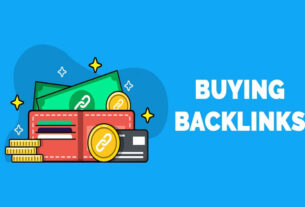JavaScript Object Notation is a widely used file format and data interchange standard that employs plain text to represent and exchange data objects such as lists, documents, and images (or any other serializable value).
It’s used for everything from game and text editor configuration files to every API you’ll ever use. These days, everyone uses JSON. JSON is likely to be used whenever two applications exchange data over the internet. All the major players have started using it. Of the ten most popular online APIs, a list comprising largely of APIs given by big firms like Google, Facebook, and Twitter, just one API exposes data in XML rather than JSON.
How do we utilize JSON, and what is it for?
For those unfamiliar, JSON refers to the JavaScript Object Notation format for storing and transferring information. JSON is a data format initially developed for use with the JS (JavaScript) programming language but now also works with PHP, Python, Ruby, and Java, despite its name.
The JSON text syntax simplifies communication when compared to other forms. The JavaScript object can be converted to JSON. Therefore, JSON is largely utilized to transport the data between web servers and web apps. Web services and APIs use JSON to transport data to the public. It employs values that may be serialized, such as key-value pairs, arrays, etc.
JAVASCRIPT ONLINE JSON VIEWER REMOVES ALL IMPEDIMENTS
The principal goal of the JSON format viewer is to enable you to demonstrate if the data entered by you is accurate or not. A PC or mobile device with persistent internet access is required to use this program. After eliminating unnecessary whitespace, the code may be reorganized, edited, and downloaded with the help of a slick Online JSON Viewer.
The structure’s validity may be checked by making minor changes to the JSON schema, which is easily done in this format. With only a few clicks using our top-notch JSON reader, your code will be checked for errors, cleaned up, and compressed. Another advantage of JSON is that its structure is entirely distinct from XML’s, even though the two serve similar purposes. The JSON format viewer displays data in an editable view. Our tree viewer will also alert you promptly if any errors require fixing with the serial number of the line where the error is located.
How can I get, verify, style, or compress JSON data using the Online Json Formatter?
Following these instructions will allow you to utilize our free online JSON File Viewer, JSON Formatter, JSON Beautifier, and JSON Minifier.
- To use the JSONLint Validator, open the JSON Viewer Online.
- A file may be uploaded, or the JSON data can be copied and pasted.
- Our JSON Validator will verify the data integrity if it is valid JSON.
- Converting JSON to XML or CSV format is possible after verification.
- The JSON data may be cleaned up or compressed using our dedicated JSON beautifier or JSON minified.
- Use a web-based JSON reader if you need to see the data in a tree format.
What are the recommended JSON practices?
Certain conventions are obligatory in JSON. The following is a list of these requirements.
- Curly brackets denote the keys and values for the objects.
- The symbol for an empty item is {}.
- The arrays are enclosed by the square brackets [].
- The notation [] denotes a null array.
- Each key-value pair represent one member.
- Each component of an item must be identified by its key.
- It’s recommended to use double quotation marks around the member’s key. The same holds if the value is a string.
- Lowercase “true” and “false” are used to represent the Boolean values.
- The number is displayed in a double-precision floating-point format with no leading zeros.
- The null values are represented by the “null” in lowercase.
- Replace “Offensive” characters with backslashes.
- If you’re working with a data type that isn’t supported as-is, like a date, you’ll need to convert it to a string.
- If an object or array member is not the final one, a comma “must be included after the member in JSON format.
Is this JSON formatter tool safe & secure?
This Online JSON formatter is a secure and trustworthy tool. In short, we do not store any of your information on our servers. No outsider can see either of these datasets.
Conclusion
The JSON data interchange format is widely used. It is typically used for data transfer across various networks. Because it is textual, JSON is simple for humans and computers to understand and parse into its components. Although frequently regarded as the subclass of JavaScript, JSON may be read/modified by any computer language. The json file extension is used for JSON documents, which can be written in any language.



